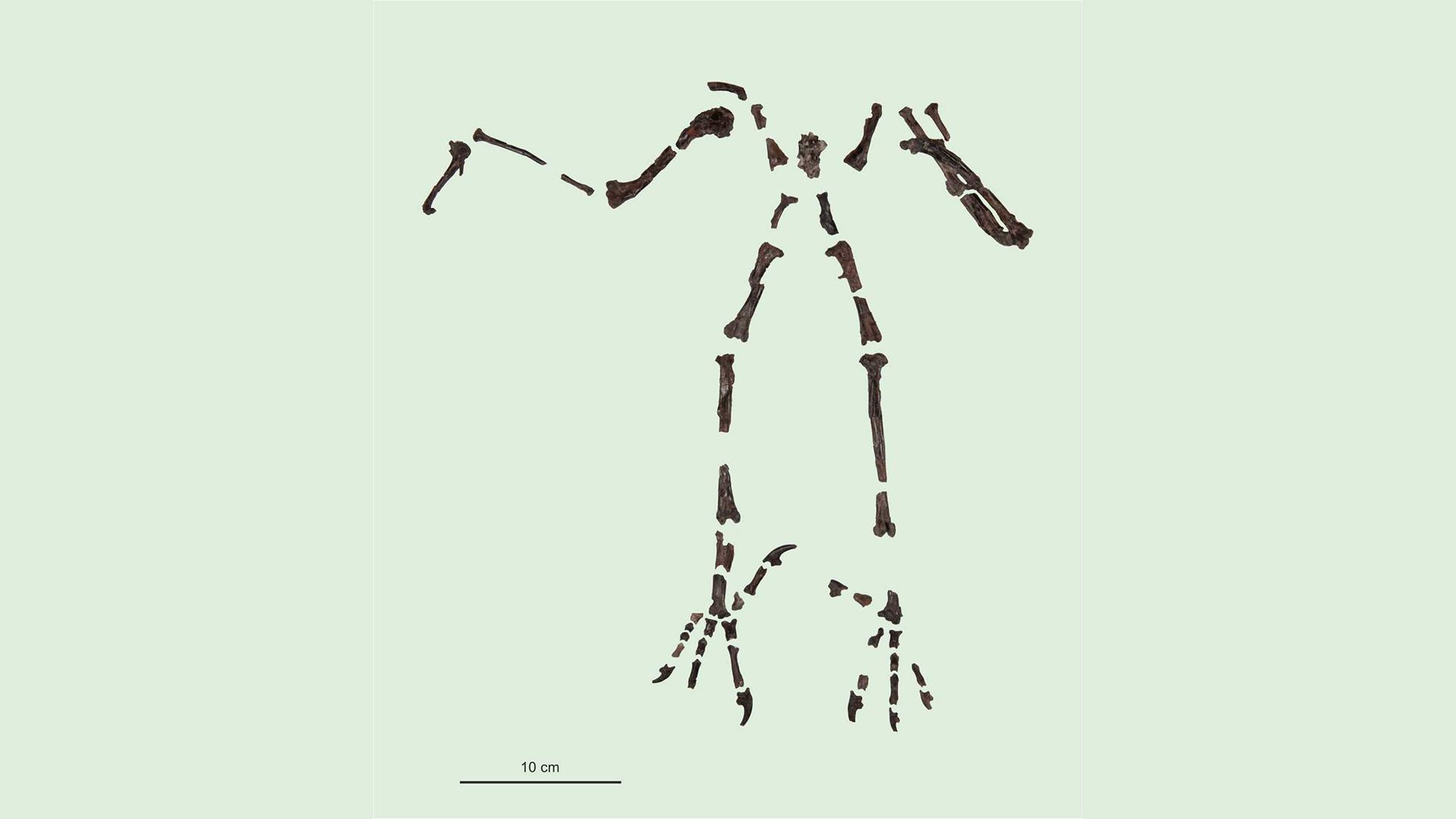55 million-year-old owl with 'murder feet' unearthed
This newfound species is one of the earliest known owls.

A 55 million-year-old owl fossil with "murder feet" has recently been described.
Based on its preserved foot bones, this ancient avian predator likely hunted like a hawk — killing its prey with piercing talons — unlike its modern-day relatives that use their beaks to kill. The newfound skeleton, which represents a previously unknown owl genus and species, is the oldest near-complete owl fossil, according to a new study.
Though the fossil is missing its skull, nearly all the bones in its body are intact and preserved in three dimensions. And this owl was a big one; at nearly 2 feet (60 centimeters) long, it would have been about the size of a modern snowy owl (Nyctea scandiaca).
Related: Whooo knew? 10 superb facts about owls
The fossil was discovered in 1990 in the Willwood Formation in northern Wyoming, in sediments deposited about 55 million years ago. Researchers named the newly described owl Primoptynx poliotauros; Primoptynx means "first owl" ("primus" is the Latin word for "first," and "ptynx" is Greek for "owl"). The species name translates as "gray bull" and refers to Graybullian, a substage of geologic time marking where the fossil was found, the scientists reported on July 28 in the Journal of Vertebrate Paleontology.
Paleontologists identify ancient owls by looking at the shapes of certain bones, among them the shoulder bone, the humerus in the wings, and leg bones such as the tibiotarsus (a bone between the knee and the heel) and the tarsometatarsus (the bone between the heel and the toes), which are important for catching prey or perching, said study co-author Thierry Smith, a head of research in the Department of Paleontology at the Royal Belgian Institute of Natural Sciences.
"Among them, the tarsometatarsus is the best bone to identify a fossil owl," Smith told Live Science in an email.
Get the world’s most fascinating discoveries delivered straight to your inbox.
But in the case of Primoptynx, the bones that captured the scientists' attention were in the owl's toes. The toes of modern owls are all about the same size. Primoptynx's first and second toes were bigger than the others, so its feet most closely resembled those of predatory raptors such as hawks and eagles. This suggests that the extinct owl hunted as hawks do, targeting larger or more difficult-to-capture prey and then clutching and piercing their bodies in a lethal deathgrip with its feet.
By comparison, owls typically stab prey to death with their sharp beaks, according to the study.
When Primoptynx soared across Wyoming skies 55 million years ago, North America was populated by mammals such as primates, rodents, and early relatives of deer and horses, Smith explained. The owl's impressive feet could likely grip something the size of a rabbit — but rabbits had yet to appear in the region.
"Most of these earliest modern mammals were still of small size at that time and lived under tropical conditions," Smith said. Primoptynx might therefore have preyed upon small primates or carnivores in the trees, or swooped down to snatch up small hoofed mammals or rodents on the ground.
Primoptynx also presents rare fossil evidence of early owls, and its size and hawklike feet hint at the diversity in the group, Smith said. Prior to this discovery, the oldest owl fossils were bone fragments and a single leg bone dating to around 60 million years ago.
"It is a very old owl that still retains primitive skeletal characters, which help [us] to understand the evolutionary history of owls, from which type of ancestors they come from and how their anatomy evolved and specialized," he said.
Originally published on Live Science.

Mindy Weisberger is a science journalist and author of "Rise of the Zombie Bugs: The Surprising Science of Parasitic Mind-Control" (Hopkins Press). She formerly edited for Scholastic and was a channel editor and senior writer for Live Science. She has reported on general science, covering climate change, paleontology, biology and space. Mindy studied film at Columbia University; prior to LS, she produced, wrote and directed media for the American Museum of Natural History in NYC. Her videos about dinosaurs, astrophysics, biodiversity and evolution appear in museums and science centers worldwide, earning awards such as the CINE Golden Eagle and the Communicator Award of Excellence. Her writing has also appeared in Scientific American, The Washington Post, How It Works Magazine and CNN.



